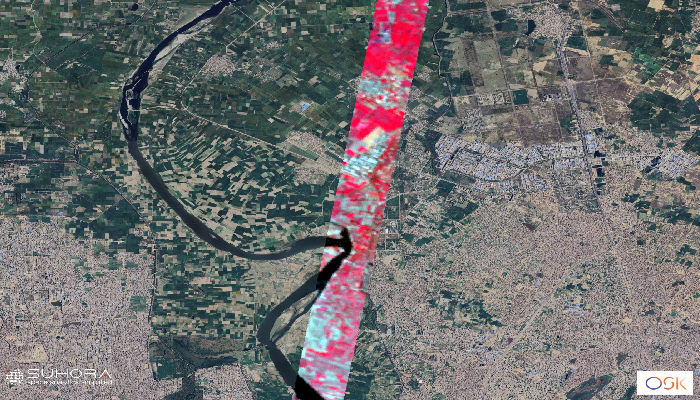Suhora Technologies, an India-based space data analytics firm, has announced a strategic partnership with Orbital Sidekick (OSK), a U.S.-based hyperspectral imaging company, to bring advanced satellite data services to the Indian market. This collaboration positions Suhora as the first Indian company to offer operational commercial hyperspectral satellite data covering the VNIR-SWIR spectrum, significantly enhancing India’s geospatial and earth observation capabilities.
Under the agreement, Suhora will integrate OSK’s high-resolution hyperspectral imagery into its subscription-based SPADE platform, which already supports multi-sensor satellite data including SAR, optical, and thermal. With the addition of hyperspectral data, SPADE will allow users to detect and classify materials with greater accuracy. This will benefit various sectors such as geology (mineral and petrological mapping), environment (oil spills, methane leaks), and strategic applications.
OSK’s hyperspectral sensors offer imagery across 472 contiguous spectral bands with a high spatial resolution of 8.3 meters, surpassing public sources like EnMAP, PRISMA, and EMIT in spatial resolution and revisit frequency. The GHOSt constellation—OSK’s fleet of five hyperspectral satellites—will provide SPADE users with improved data availability and deeper spectral insights across a wide range of applications.
Krishanu Acharya, CEO and Co-Founder of Suhora, said the collaboration addresses rising demand from industries and governments for high-quality satellite analytics. “This partnership enhances decision-making capabilities and strengthens the global geospatial ecosystem,” he noted.
Rupesh Kumar, CTO and Co-Founder of Suhora, highlighted that the integration of hyperspectral data will empower users to achieve new levels of precision in mapping, monitoring, and anomaly detection—setting new standards for satellite analytics in India.
Tushar Prabhakar, COO and Co-Founder of Orbital Sidekick, expressed enthusiasm for entering the Indian market with Suhora, citing India’s growing need for advanced geospatial solutions and the strong potential for hyperspectral data across critical sectors.

